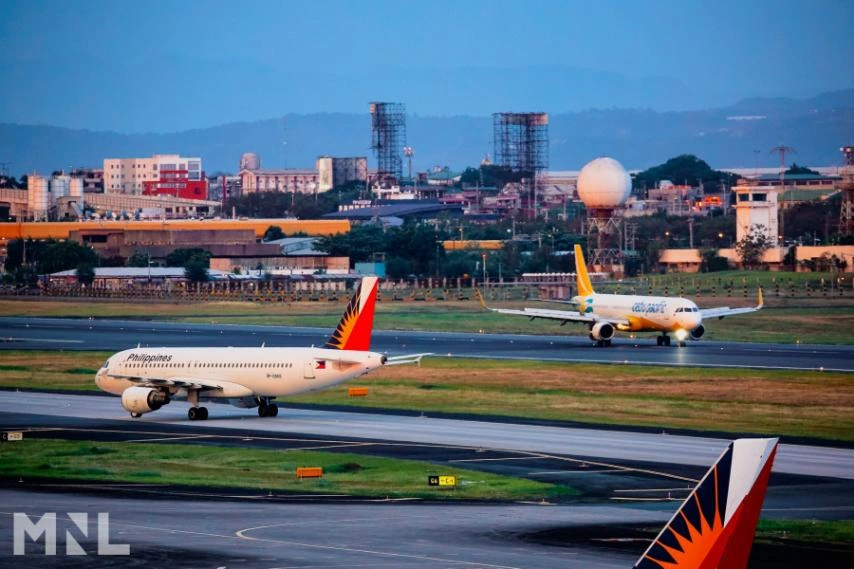
Airports are fascinating hubs of activity that connect people, cultures, and economies across the globe. Beyond their primary function of facilitating air travel, airports are filled with intriguing stories, unique architectural designs, and remarkable innovations. In this blog, we’ll explore a variety of interesting facts about airports that you may not have known. From the busiest terminals to the quirkiest airport amenities, join us as we take off on a journey through the world of aviation and uncover the hidden gems of these bustling gateways. Buckle up, and let’s dive into the captivating world of airports!
Hartsfield-Jackson Atlanta International Airport is renowned as the world’s busiest airport by passenger traffic, handling over 100 million passengers annually. Located in Atlanta, Georgia, it serves as a major hub for domestic and international flights. The airport features two parallel runways and is a key connecting point for travelers across the United States and around the globe. Its strategic location allows it to serve a wide range of destinations, making it a vital artery in the global aviation network.
King Fahd International Airport in Saudi Arabia holds the title of the largest airport by area, covering a staggering 780 square kilometers. This vast airport, located near Dammam, includes not only passenger terminals but also extensive facilities for cargo and military operations. Its sheer size is comparable to that of some countries, and it features a unique architectural design that reflects the culture and heritage of Saudi Arabia. The airport is equipped with modern amenities and serves as a significant hub for international travel in the region.
Denver International Airport boasts the longest public-use runway in the United States, which stretches an impressive 16,000 feet. This runway is designed to accommodate large aircraft, including those used for international flights. The airport itself is known for its distinctive peaked roof, which resembles the Rocky Mountains and symbolizes the region’s natural beauty. Denver International Airport is also recognized for its extensive art program and sustainable practices, making it a unique travel destination in its own right.
The shortest commercial runway is found on the Caribbean island of Saba, measuring only 1,312 feet. This runway, located at Juancho E. Yrausquin Airport, is surrounded by steep cliffs and the ocean, making landings and takeoffs quite challenging. The airport primarily serves small aircraft and is a crucial link for residents and tourists traveling to and from Saba. Its unique characteristics and scenic location make it a fascinating point of interest for aviation enthusiasts.
Singapore Changi Airport is famous for its exceptional amenities, including a butterfly garden, a rooftop swimming pool, and a free movie theater. Recognized as one of the best airports in the world, Changi offers travelers a unique experience with its lush greenery and innovative design. The butterfly garden features over 1,000 butterflies and provides a serene environment for passengers. Additionally, the airport’s rooftop pool offers a refreshing escape, while the movie theater showcases a variety of films, making layovers enjoyable for travelers.
The first commercial airport in the world was Croydon Airport in London, which opened in 1920. This historic airport played a significant role in the early days of aviation, serving as a hub for passenger flights and mail services. Croydon was known for its pioneering spirit, hosting the first scheduled flights and contributing to the development of air travel. Although it ceased operations in 1959, the airport remains an important part of aviation history and is commemorated for its contributions to the industry.
Kansai International Airport in Japan is built on an artificial island in Osaka Bay, a remarkable feat of engineering that took three years to construct. The airport is designed to withstand earthquakes and rising sea levels, showcasing innovative design and construction techniques. Opened in 1994, Kansai serves as a major international gateway for travelers to Japan and features a unique terminal building that resembles a wave. Its location and design make it a significant achievement in modern architecture and infrastructure.
The world’s highest airport is Daocheng Yading Airport in China, sitting at an altitude of 14,472 feet. Located in the Tibetan Plateau, this airport serves as a gateway to the scenic Yading Nature Reserve and is known for its breathtaking views of the surrounding mountains. Opened in 2013, Daocheng Yading Airport is crucial for connecting remote regions with major cities, facilitating tourism and economic development in the area. Its high altitude presents unique challenges for aviation, making it a remarkable engineering accomplishment.
London Gatwick Airport is the busiest single-runway airport in the world, managing over 46 million passengers annually. This airport, located to the south of London, serves as a major hub for both domestic and international flights. Gatwick’s single runway is used efficiently to accommodate a high volume of air traffic, and the airport is known for its extensive range of services and amenities for travelers. Its proximity to London makes it a popular choice for passengers heading to the capital and beyond.
Ninoy Aquino International Airport in Manila, Philippines, is recognized as the most delayed airport in the world, with an average delay of 45 minutes. This airport serves as the main gateway to the Philippines and handles a significant volume of both domestic and international flights. Factors contributing to delays include heavy air traffic, weather conditions, and infrastructure challenges. Despite these issues, the airport remains a vital part of the country’s transportation network, serving millions of passengers each year and facilitating tourism and commerce.
Munich Airport features its own brewery, producing over 3,000 hectoliters of beer annually. This unique aspect of the airport allows travelers to experience a taste of Bavarian culture while waiting for their flights. The airport’s brewery, named “Airbräu,” offers a variety of locally brewed beers and traditional German dishes, making it a popular spot for passengers and visitors alike. Munich Airport is known for its exceptional services and amenities, and the brewery adds a distinctive touch to the overall travel experience.
Helsinki Airport offers a book swap service, allowing travelers to leave a book and take another one for free. This initiative encourages reading and sharing among passengers, creating a sense of community within the airport. The book swap service is part of Helsinki Airport’s commitment to providing a welcoming and enjoyable environment for travelers. With a diverse selection of books available in multiple languages, it caters to the varied interests of international passengers, making layovers more pleasant.
Zurich Airport features a bicycle rental service, allowing passengers to explore the surrounding area during long layovers. This initiative promotes sustainable transportation and encourages travelers to enjoy the scenic beauty of Zurich and its surroundings. With dedicated paths and bike-friendly infrastructure, the airport provides an opportunity for passengers to experience local culture and attractions while staying active. The bicycle rental service is part of Zurich Airport’s broader efforts to enhance the travel experience and promote eco-friendly practices.
Incheon International Airport in South Korea is home to an ice skating rink that is open year-round. This unique feature provides a fun and entertaining option for travelers, allowing them to enjoy a leisurely activity during layovers. The airport is known for its world-class facilities and services, and the ice skating rink adds a touch of excitement to the travel experience. Incheon International Airport consistently ranks among the best airports globally, thanks to its innovative amenities and focus on passenger comfort.
Hong Kong International Airport boasts a nine-hole golf course located right next to Terminal 2. This unique feature allows passengers to unwind and relax before their flights while enjoying stunning views of the airport and surrounding landscapes. The golf course is accessible to travelers with layovers and provides a refreshing break from the hustle and bustle of air travel. Hong Kong International Airport is well-regarded for its extensive range of services and amenities, making it a favorite among frequent flyers.
San Francisco International Airport has a therapy pig named LiLou, who helps calm nervous passengers. This delightful initiative is part of the airport’s “SFO Therapy Animal Program,” which aims to provide comfort and support to travelers. LiLou, a Juliana pig, is trained to interact with passengers and bring joy to those who may be feeling anxious about flying. The program has received positive feedback from travelers, highlighting the airport’s commitment to enhancing the passenger experience through unique and compassionate services.
Tokyo Narita Airport features a traditional Japanese tea room, where travelers can experience a tea ceremony before their flights. This cultural offering allows passengers to immerse themselves in Japanese traditions and enjoy a moment of tranquility in the bustling airport environment. The tea room is designed to provide a serene atmosphere, complete with tatami mats and beautiful decor. Narita Airport’s commitment to showcasing Japanese culture enhances the overall travel experience for international visitors.
Vancouver International Airport is home to an aquarium that features over 5,000 marine animals. This unique attraction showcases the rich biodiversity of the Pacific Northwest and serves as an educational resource for travelers. The aquarium is designed to provide an engaging experience for passengers, with interactive exhibits and displays that highlight marine conservation efforts. Vancouver International Airport is recognized for its commitment to sustainability and promoting awareness of local ecosystems, making it a standout destination for travelers.
Amsterdam Schiphol Airport has a library that offers books in 29 different languages. This unique feature caters to the diverse international traveler base and encourages reading during layovers. The library provides a quiet space for passengers to relax and enjoy literature, reflecting Schiphol’s commitment to enhancing the passenger experience. With a wide selection of genres and languages available, the library serves as a cultural hub within the airport, promoting literacy and a love for reading among travelers.
Dubai International Airport features a Zen garden, providing a peaceful retreat for stressed travelers. This serene space is designed to help passengers unwind and relax amid the bustling airport environment. The Zen garden includes elements such as water features, lush greenery, and comfortable seating areas, creating a calming atmosphere. Dubai International Airport is known for its luxurious amenities and services, and the Zen garden exemplifies its commitment to passenger comfort and well-being during travel.
FAQs about Airports:
1. What is the largest airport in the world?
The largest airport in the world by total area is King Fahd International Airport (DMM) in Dammam, Saudi Arabia. It covers approximately 780 square kilometers (301 square miles). However, when it comes to passenger traffic, Hartsfield-Jackson Atlanta International Airport (ATL) in the United States is often recognized as the busiest airport in the world.
2. How do airports manage security?
Airports employ a combination of advanced technology and trained personnel to ensure passenger safety. Security measures include screening passengers and luggage through metal detectors and X-ray machines, using full-body scanners, and conducting random checks. Additionally, airports work closely with national security agencies to implement protocols and respond to potential threats.
3. What are the different types of airports?
Airports can be categorized into several types:
- International Airports: Serve international flights and have customs facilities.
- Domestic Airports: Handle flights within a country.
- Regional Airports: Smaller airports that serve specific regions, often with limited facilities.
- Private Airports: Operated for private use, often by corporations or individuals.
- Cargo Airports: Focus primarily on freight transport rather than passenger services.
4. What is the purpose of airport codes?
Airports are assigned unique three-letter codes by the International Air Transport Association (IATA) for easy identification. These codes simplify ticketing, baggage handling, and flight operations. For example, Los Angeles International Airport is coded as LAX, while London Heathrow Airport is coded as LHR.
5. How do airports handle delays?
Airports manage delays through coordinated communication between airlines, air traffic control, and ground services. When delays occur, airports provide updates to passengers via announcements and displays. Airlines may also offer rebooking options or compensation depending on the situation and policies in place.
6. What amenities do airports typically offer?
Modern airports often provide a variety of amenities to enhance the travel experience, such as:
- Restaurants and cafes
- Duty-free shops
- Lounges for premium passengers
- Free Wi-Fi
- Charging stations
- Baggage storage services
- Play areas for children
- Health and wellness facilities, like spas or yoga rooms
7. How do airports contribute to the economy?
Airports play a crucial role in the economy by facilitating trade, tourism, and job creation. They serve as gateways for international business, contribute to local tourism industries, and provide employment opportunities in various sectors, including aviation, hospitality, and retail.
8. What is the process for checking in at an airport?
Checking in at an airport typically involves the following steps:
- Arrival: Arrive at the airport with enough time before your flight.
- Check-In: Use self-service kiosks or visit the airline’s check-in counter to obtain your boarding pass and check luggage.
- Security Screening: Proceed to security, where you’ll need to present your boarding pass and identification.
- Boarding: After passing through security, find your gate and wait for boarding announcements.
9. What are the busiest airports in the world?
The busiest airports are often ranked by passenger traffic. As of 2023, some of the busiest airports include:
- Hartsfield-Jackson Atlanta International Airport (ATL)
- Beijing Capital International Airport (PEK)
- Los Angeles International Airport (LAX)
- Dubai International Airport (DXB)
- Tokyo Haneda Airport (HND)
10. Are there any environmental initiatives at airports?
Many airports are increasingly adopting sustainable practices to reduce their environmental impact. Initiatives may include:
- Implementing energy-efficient systems and renewable energy sources.
- Reducing waste through recycling programs.
- Using sustainable materials in construction and operations.
- Promoting public transportation options to and from the airport.









